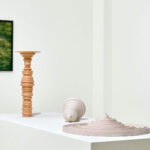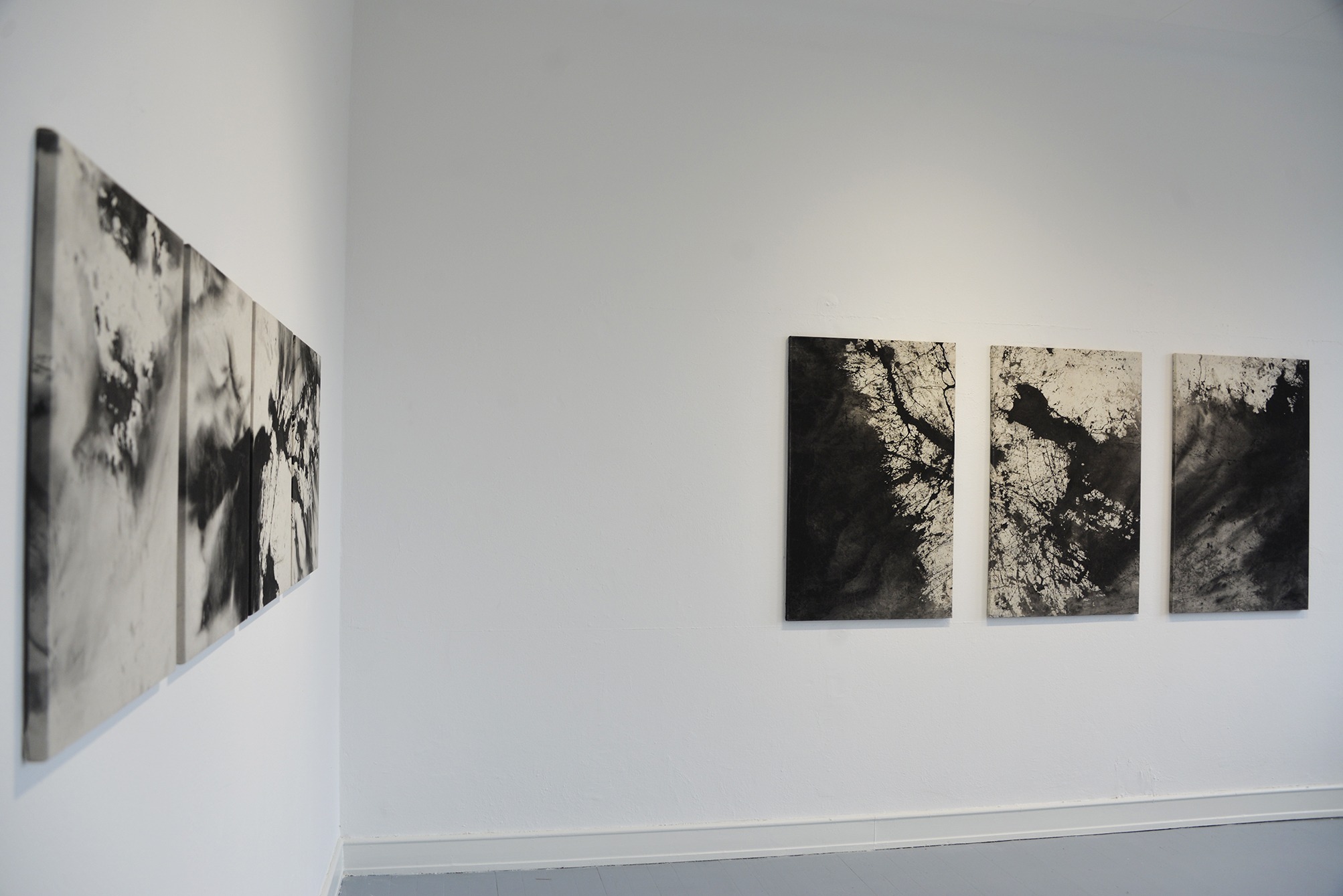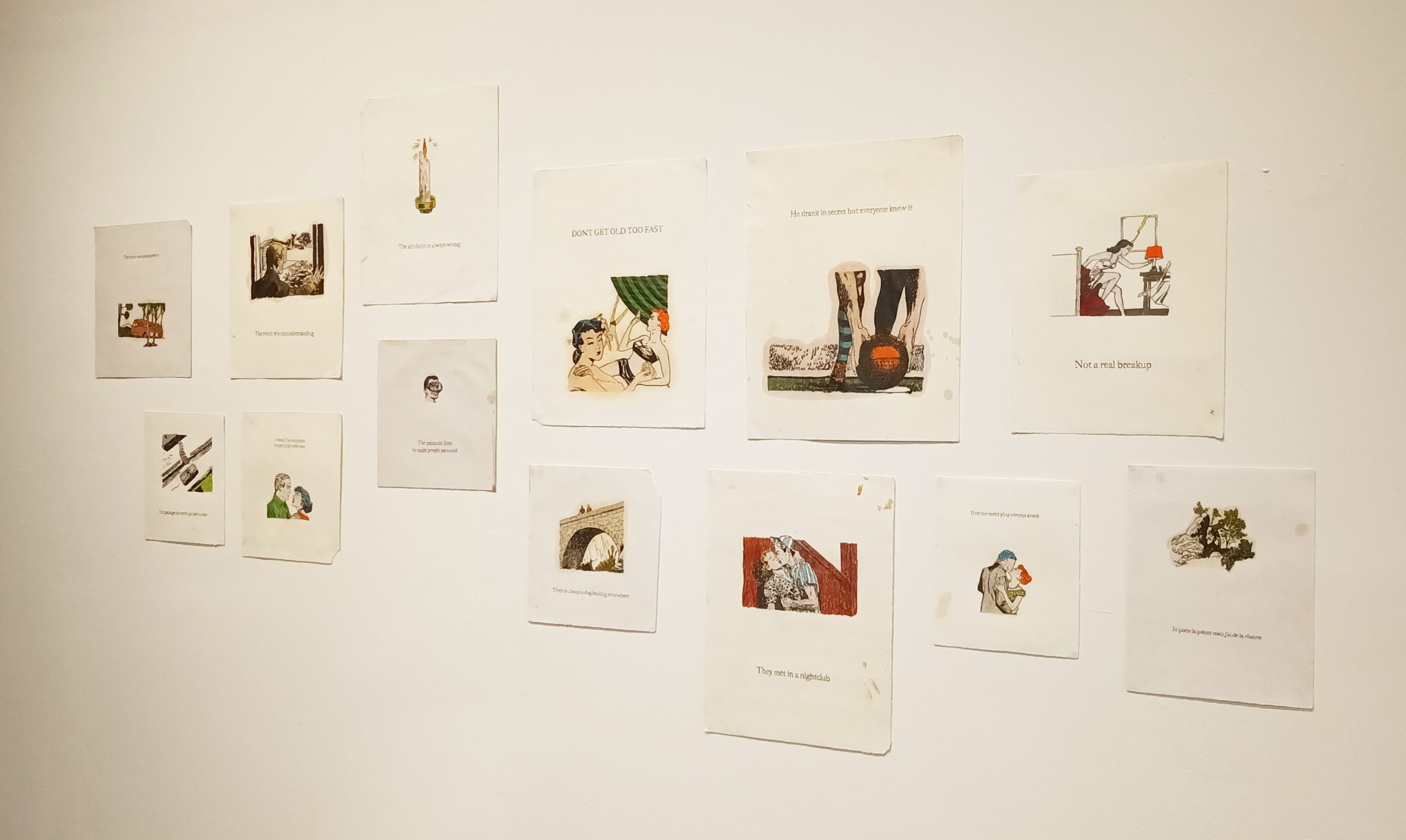
Article de presse – 2022 – Arts hebdo medias, Benoît Barbagli “Tout autour, l’eau”

Hors les murs – 2024 – Benoît Barbagli – Symphonie sous-marine
Benoît Barbagli, Gérald Panighi
A la recherche du temps perdu
Red Sheep Gallery, Suède
Exposition jusqu'au 13 juin 2024
Avec : Emmanuel Régent, Benoît Barbagli et Gérald Panighi
Benoît Barbagli
Born in 1988 in Nice. He lives and works between Paris and Nice.
Benoît Barbagli’s studio is vast. Ocean, river and mountain are his performative spaces. Art arises there, a vital emergence within the collective. His plural and multi-medium proposals hatch in itinerant gestures. Art moves in nature.
In his peripatetic devices, the path makes sense, the nudity is candid, and the work manifests itself in upsurges. The configurations are multiple, the rituals varied and, often, the expedition that leads to the artistic experience is done with visual artists. His camera is described as “flying”. It passes from hand to hand and the signature is frequently shared or collective.
Benoît Barbagli explores borders. He draws from the substrate of creation in search of its germinations from shared nourishment. The Mountain creates as much as the sea, as the artist friend, by his presence, by his movement, by the principle of life, essentially random, which moves him. Art captures moments of the Living which always manifests itself where we least expect it, in unheard-of sequences that we sometimes struggle to capture in their deployments. With humor, lightness, strength and delicacy, Barbagli invites us to capture the moments and encourages us to consider them in their ephemeral beauty. An ode to Vitality.
The four elements are recurring. They animate and structure the artist’s series in Heraclitean bursts. Fire, water, air, earth. Benoît Barbagli’s universe is poetic, polysemous, modest, funny. He likes to “divert references from culture to return them to nature.” What makes a work? The project ? Its manifestations? He orchestrates meetings, a community is created around the project and the creative space then becomes a joyful pretext for life.
To pay homage to the living, to restore its place to it, the artist fades away, he stages, stages and yet fades with great elegance, the ego dissolves in the interconnected, I is another. Benoît Barbagli is reverse romanticism. His return to nature takes place in a peaceful setting where egotism is annihilated, where praise is stripped of pomp, where art emerges in its simplest expression.
In the Mediterranean Sea in winter, a hand holds out a bouquet in the icy water, the fertile sea is also deadly lately. Eros and Thanatos come together, amorous ardor and mortuary homage are two sides of the same mirror. In an attempt at love by torchlight, a naked body throws itself off a cliff, tomb of the diver or inextinguishable passion? The moment is in suspense, an unresolved space subject to the projections of the viewer. Grace, fall and rebound – or not, are part of the whole thing. Bodies carry a stone under the troubled surface of a lake, the emergence of a new Atlantis or the Sisyphean perspective of an inevitable landslide after yet another attempt? The artist and his acolytes bring their stone to the visual edifice.
Benoît Barbagli is the sherpa of the mountain, he transports his paintings there so that the latter can create. He removes the museumification of the woman’s body by returning it to the earth. He picks up the spark igniting the beam. He walks on the Anthropocene by questioning the stars, born of chaos.
By Pulcherie Galmer for the exhibition Under Chaos, Life
Gérald Panighi
Born on 1974, in Menton, France
Lives and works in Nice, France
Gérald Panighi’s work is an interdependent association between an image carefully neglected with a powerful reference and a text diverted from everyday life situations. The gap between the two triggers laughter or smile. His humor is often abrupt, sometimes dark, stressing our humanity and our imperfections, referring us back to our own reflection through the prism of his vision.
Gérald panighi’s art practice starts with sorting, a selection of images which are mostly from 1960’s comics. He appropriates characters which he then transfers by using tracing paper. Drawn in pencil, highlighted with watercolour, colour pencils, they spring to life on the page where they are something’s accompanied by aphorisms. Lost in the void, the fine and delicate line becomes a fragment, an instant of absurd life which by mixing the familiar with the incongruous engenders a disturbing strangeness. His drawings carry the traces and marks of their own creation. Stains and smudges of oil, ink, coffee, hand, or elbow prints surround the figures with an additional layer of matter, stressing the motif. The surface of the rough sheet- the slightly wrinkled or warped paper-also carries the scars of its passage in the studio, like so many ravages of time and haphazard care.
These accidents break down the mechanical aspect of the tracing and the working constraints which the artist imposes on himself: they constitute the true materially of the drawing.
In another part of his work, Gérald Panighi starts from aphorisms that come to his mind, like that, often in the evening, and that he types on sheets of paper of all sizes, such as the beginning or the passage possible of a novel. Then come the images that respond to these poetic sketches without ever really illustrating them, thus creating a sort of dialogue of the deaf.
Gérald Panighi practices drawing with a certain sense of economy, arranging large breathing zones in the white of the paper. Text and images conjure up furtive ideas here, flashes of the mind that just pass and leave room for immense emptiness.


